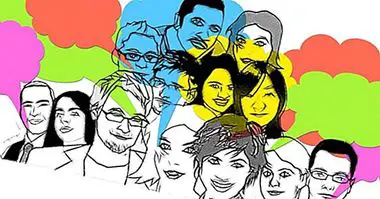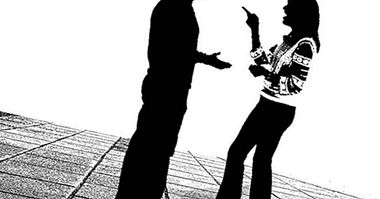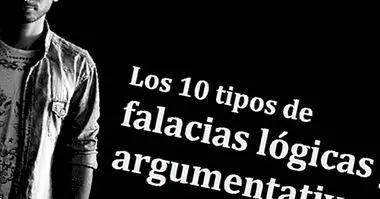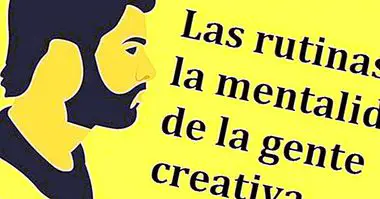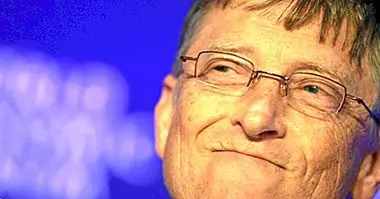What is reversible thinking? Holding on to beliefs
Many times the brain is thought of as an organ dedicated to performing thorough rational analyzes of everything that concerns our survival. However, when we start to investigate a concept called reversible thinking , we see that it is not like that. To exemplify it, we can use a small game.
I'm going to show you four different cards. In each of them, on one side there is a number and on the other there is a letter.

And I also want you to know that I am convinced that on each card with an "E" on one side, there is a "2" on the other .
Now I ask: How can you tell if I am telling the truth? At what minimum number of cards do I need to turn to find out if my statement is correct or false?
Before continuing reading or going out to find the solution to the problem, take a few minutes to think about it ... And remember your answer well.
- Related article: "Are we rational or emotional beings?"
Playing with the thought
If you believe that to know if my statement is correct or not, it is necessary to turn over the card that contains the letter "E", then you have responded as the vast majority of people to whom the problem was raised. On the other side of the card with the letter "E" there may or may not be a number "2". If not, then you would have the assurance that my statement is false.
But on the other hand, it turns out that if you actually find a number "2", that is not enough to assert that my statement is true. Now, it is likely that you will then come to the conclusion that it is also necessary to turn the card that has the "2" to check if there is an "E" on the back. But that solution is also incorrect .
In the event that there is a letter "E" behind the card that has the "2" we will know with certainty that the statement I made at the beginning is correct. But on the other hand, remember that I have not said anything about what should be behind the card that has the "2", being able to find, strictly speaking, any of the many letters that the alphabet has. And if we also turn over the card that has the letter "N"?
Well, I think it's obvious that this solution does not make any sense. The problem is solved satisfactorily by turning over the cards that have the "E" and the number "5". Can you understand why?
But what a barbarity. I have to explain everything!
Reversible thinking
Clearly, first of all it is necessary to see if there is a "2" behind the card marked with an "E". But we must also sniff what is behind the card that has the "5", because only then we will know without a doubt, in the case of finding an "E" on the other side, that the premise that I formulated at the beginning is true.
Let's see it in another way. If behind an "E" there may be a "5" that would ruin the statement, it is legitimate to think that behind a "5" there may also be an "E" that, for practical purposes, is exactly the same. The possibility of reasoning in a sense and also in the opposite direction it is known as reversible thinking, and it seems to be a property that tends to be scarce among the specimens of the human race.
When we believe something, what we usually do is look for information that confirms our belief , and we rarely take the trouble to look for the counter test, in case we become wrong.
We make quick, accelerated, almost thoughtless judgments, and as soon as there is some indication that we are right about what we thought, we immediately settle; This is a phenomenon that happens every day, and as incredible as it may seem, of which practically no one is exempt, from the individual with the lowest possible educational level to that with the highest academic honors.
He does not belive me? I'm going to tell you a series of studies that have revealed the thinking process that doctors follow when diagnosing.
- Related article: "The theory of limited rationality of Herbert Simon"
The first hypothesis is the one that wins
Imagine that you are going to see Dr. Gonzalez. Already in the office, to the typical question of "What brings you here?", You relate a series of annoyances that have been ailing for some days. As is natural in this case, the doctor takes note of the symptoms that you refer to him and begins to think of one or two hypotheses that could explain the problem. From that diagnosis that the doctor considers probable, he performs a brief physical examination and indicates a series of studies.
Well, scientific evidence suggests that in cases like this, doctors cling to their original hypothesis , they dive headfirst to confirm it, and many times they lose sight of the need to find the counter test that validates the diagnosis (the equivalent of turning the card with the number "5").
But the thing is a little more serious still. What has been observed is that doctors (even experts, who have many hours of clinical experience) tend to dismiss data that does not fit their expectations , underestimate them, or sometimes even completely ignore them. According to the nature of the brain, any clinical picture that a patient may present can not be evaluated objectively and absolutely. Beyond his baggage of knowledge, the doctor makes an interpretation of what the patient tells him, and establishes in his mind a point of departure on the basis of which he asks for the studies he considers necessary.
The problem is that many times that original diagnosis works as a rigid and immovable anchorage point. The professional then strives to find data that confirm his previous opinion. In the process, even, can overestimate any minor or irrelevant evidence that goes in the same sense of their previous expectations, giving a high degree of confirmatory value while, at the same time, it weighs down any information that is not consistent.
- Maybe you're interested: "" Heuristic ": the mental shortcuts of human thought"
When we hold on to expectations
I am not suggesting to the reader that you should not visit your doctor the next time you catch a flu or feel any pain. Neither do you intend to give lessons on how you should do your job. But the truth is that there is virtually no issue concerning the human species in which psychologists have not put their magnifying glass at some point in history, and the subject of reversible thinking is one of them.
And that is how clinical reasoning often works . The first diagnosis that comes to the head of the doctor determines the path to follow, and also contributes to distort the interpretation of the results of the different studies that the patient suffers from. Something similar happens with most people, regardless of their occupation, in their day to day and in their personal relationships.
All this irrationality that colors the senses and plays such an important role in everyday decisions is attributable, in part, to the fact that the brain is a cognitive lazy . This means that it is governed according to a principle of mental economy that often leads us to make mistakes in our day-to-day assessments. It is an invisible, unconscious process, by which the complex is simplified, and helps us create mental categories to classify our experience and thus not have to start from scratch every time we face a new situation.
It also induces us to take shortcuts in our processes of reasoning and extracting conclusions; all, of course, with the laudable purpose of making things easier for us, but unfortunately with the additional cost of a certain little madness or irrationality in our behavior.
So that, It is convenient to demystify the brain and not consider it a supercomputer designed to perform meticulous data analysis according to conventional logic. Whenever you can, use resources to get rid of work.


